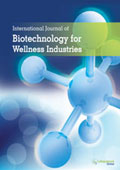ijbwi
|
|
Abstract: A large amount of oil hydrocarbons and heavy metals have been discharged into the environment and caused soil polluted. Petroleum and cadmium in soil accumulated in crops and lead to threaten human healthy through the food chain. In this experiment, seeds of sorghum and rape were germinated in deferent concentrations of petroleum and cadmium, and the effect of Peptococcus activus sp. SH3-3-9 on the germination was studied. The results showed that petroleum and cadmium inhibited seeds germination, and the effects were stronger as their concentrations increased. Peptococcus activus sp.SH3-3-9 had the role of enhancing seed germination, which indicates it has high potential in plant-microbial remediation of petroleum and cadmium in soil. Keywords: Bacteria, cadmium, petroleum, sorghum, rape.Download Full Article |
|
|
Abstract: Animal drugs have been historically applied in Chinese remedies for more than two thousands. It was reported that Chinese medical animals consisting of 1,590 species took up 12.5% of the total number of all TCM resources. Those animal drugs such as, earthworm, gecko, periostracum cicadae, and scorpios, of commonly used in China, are very remarkable and traditional for the treatment of asthma or chronic bronchitis. This review presents research advance of animal drugs possessing significant implications for the development of novel anti-asthma or chronic bronchitis drugs. The experimental studies and clinical efficacies against asthma and chronic bronchitis of animal drugs were summarized herein. Moreover, the potential utilization of animal drugs on inhibiting haze/fog induced respiratory diseases was also discussed. Keywords: Animal drugs, asthma, chronic bronchitis,medicinal insects, respiratory disease.Download Full Article |
|
|
Abstract: Pharmacology of Chinese materia medica use modern scientific methods based on the theory of Traditional Chinese Medicine (TCM) to study the interactional regulations between the body and Chinese materia medica. It aims to explain the mechanism and the scientific basis of the effects of traditional Chinese medicine. Research team has found that Yinqiao Powder has good effect on the mouse model of upper respiratory trace mucosal immunity dysfunction induced by cold stimulation with bacteria and viruses. Therefore, the function of Yinqiao Powder in the prevention and in the treatment of upper respiratory tract infection (AURI) cannot be explained only by antibacterial and antiviral properties. The effects of Yinqiao Powder on AURI may be mediated by the improvement of the function of upper respiratory mucosal immune system. Keywords: Theory of traditional Chinese medicine, Yinqiao Powder, Exterior syndrome, upper respiratory tract infection, mucosal immune.Download Full Article |
|
|
Abstract: While there is no curative treatment for the Inclusion body myopathy, Paget disease of bone and/ or frontotemporal dementia (IBMPFD) disorder, it is worthwhile to investigate alternate therapies that may slow the progression of the disease and improve the quality of life in this patient population. Therefore, this study aims to evaluate the impact of diet and exercise changes on the Quality of Life questionnaire. We assessed data from the questionnaire in 30 individuals (mean age 50.86 years; range 27-65 years; 16 Males, 14 Females) that participated in the clinical study of Valosin Containing Protein (VCP) disease. Eleven affected individuals consumed a high fat/sugar diet and 15 low fat/sugar diet of 4.09±0.25 and 1.53±0.13 servings/day respectively. Eleven individuals reported not exercising and 12 reported moderate exercise of 2.44±0.74 hours/week. In this cohort we found significantly higher mean physical health domain score for all those who exercised (P=.02) and surprisingly in those who had a high fat/sugar diet (P=.01). In the high fat/sugar diet group there was a significantly greater ability to walk; greater perceived muscle strength in arms and legs (P=.03; P=.02 and P= .02 respectively). Therefore lifestyle changes with exercise training and a higher fat/ sugar diet may have a beneficial effect in affected individuals with VCP disease. Nevertheless, larger studies with further research are needed to confirm these preliminary studies before making clinical practice recommendations. Keywords: IBMPFD, inclusion body myopathy, valosin-containing protein, diet, exercise.Download Full Article |




